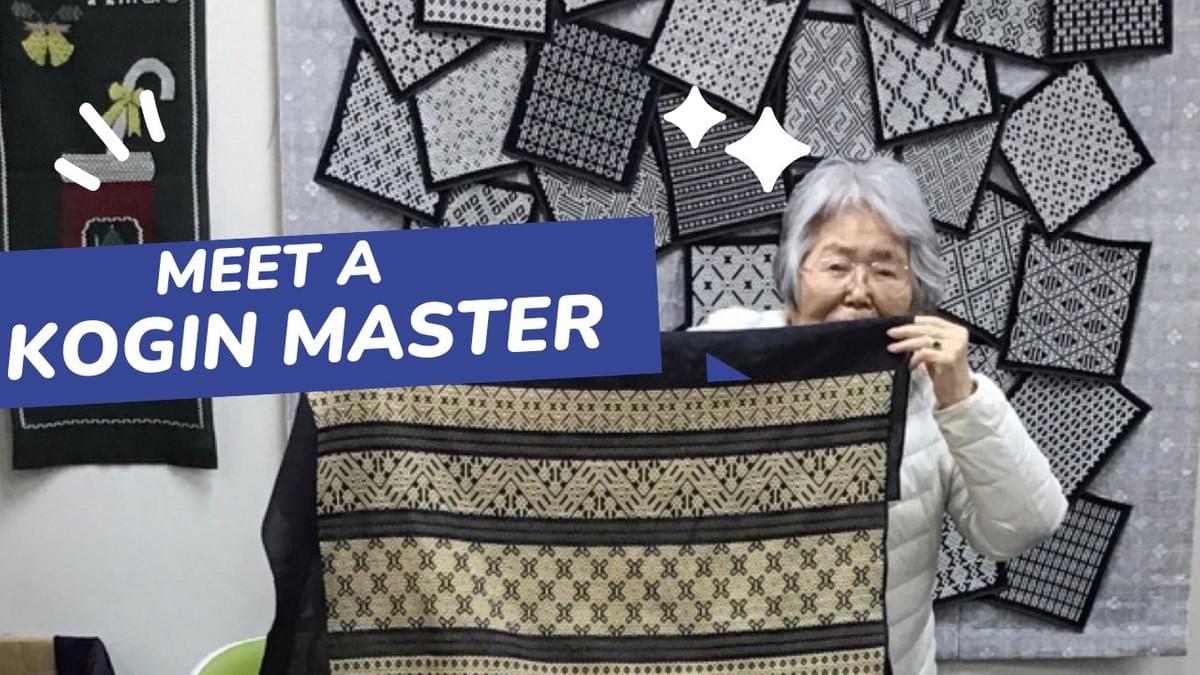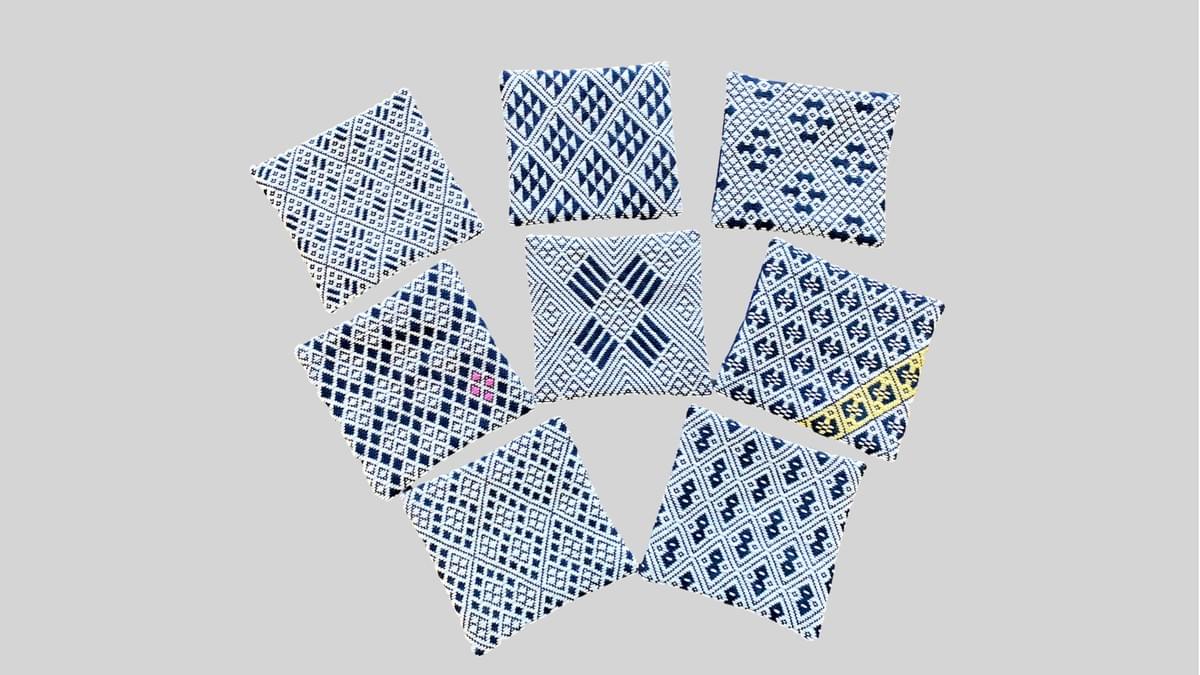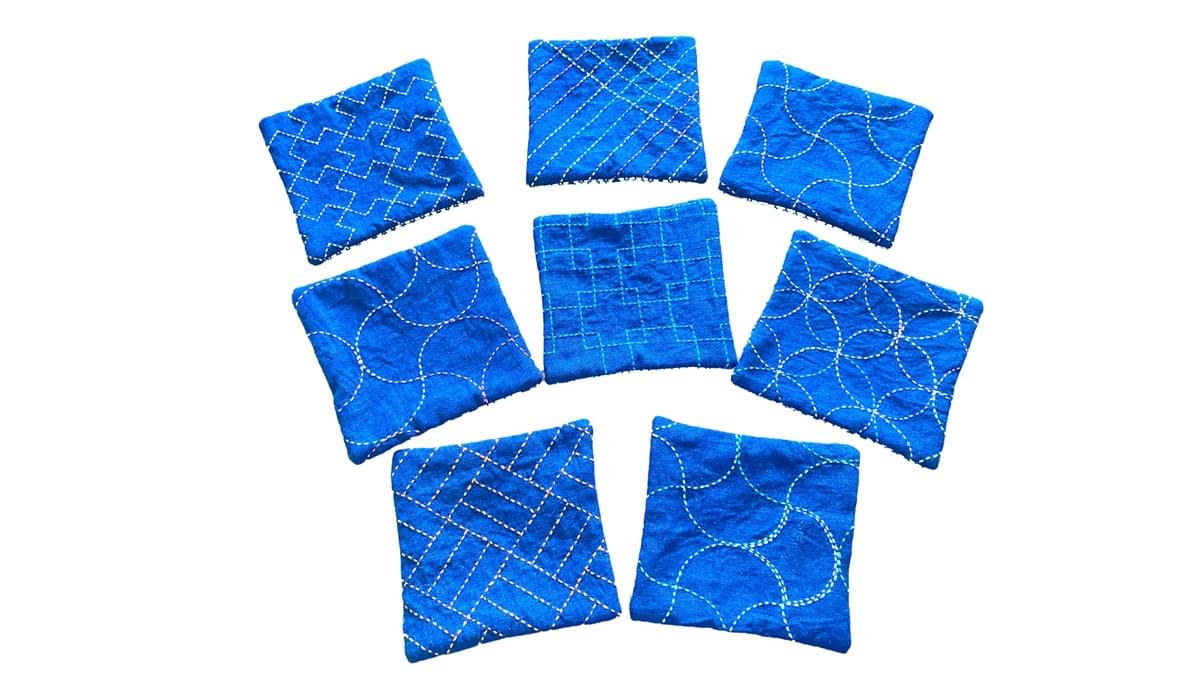
The first day of the Japan Tour 2023 starts with meeting a Kogin Master, who isn't well known in English yet. One of my Sashiko students (a Japanese who took my Japanese Sashiko Class) also practice Kogin, and she kindly introduced them to us to take a one-day brief workshop. The class usually go for monthes and years... but with a series of good conversation with artisans there, I am happy to meet her, and spend time in Kogin together.
What is Kogin?
From terminology perspective, "Kogin" can be categorized under Sashiko. However, it is quite different from the Sashiko we practice. I have been trying to practice Kogin, but I don't see myself fitting in... too much challenge for me to feel comfortable (I know, it is just an excuse)...
Well, the point of this is that there are significant differences between Kogin & the Sashiko we practice. Let's see what Kogin is & what is the difference between.
It was "More" Severe situation there.
The Sashiko we practice was developed in a very harsh condition with limited resources. They stitched, put the thread through the fabric to make the fabric stronger. However, in most cases, the fabric we stitched was cotton. In nothern part of Japan, the cotton fabric was not available so easily. Instead, they used more "rough" fabric like Hemp. Please imagine that the Rough Hemp/Linen Fabric. We can often find a space between the warp and weft. Kogin was practice to "fill" those spaces within the fabric with thick thread.
Therefore, the patterns are based on the numbers in the warp and weft. The practitioners counts the stitches & create beautiful stitches. Also, as it is more like "filling" rather than "stitching through", they use dull-top needle. The sharp-top needle can scratch and catch the rough fabric and end up with messing more.
Is it difficult? Can one do both?
I will go into the details with the master's lecture on 4/13. I do not want to share unnecessary "insufficient" information here. This tour isn't about sharing my Sashiko Stories - it is to share "Their (unknown Sashiko Artisans) Stories".
Let me clarify one thing, though, to answer your wondering: "Is it difficult"?
I personally think Kogin is challenging while I consider Sashiko like a part of me breathing the air. The Master told me that she chose Kogin (and doesn't practice the Sashiko I teach much) because she find Kogin more easier.
At the same time, my Students who are learning both say that it can be done simultaniously. It is just a different "brain" with the same technique, posture, and mindset. I guess, in this case, "brain" refer to the "rhythm" I often introduce.
(Photos of my student practicing Kogin on one side of the coasters, and Sashiko on the other sides).


However, please acknowledge that there are masters who decided to dedicate their lives into one category of one Sashiko - here Kogin, and Sashiko.
I hope this blog explain why it is so scary to define "Sashiko" without acknowleding the stories. I will share the master, Hiroko Takagi Sensei, in another post with her profile & more photos.
Atsushi